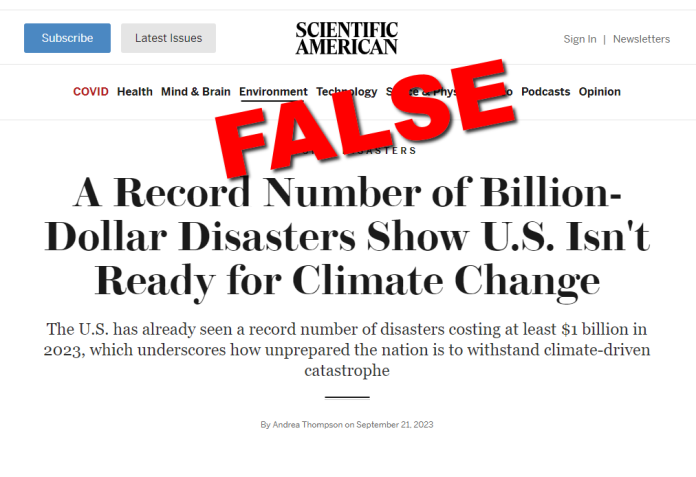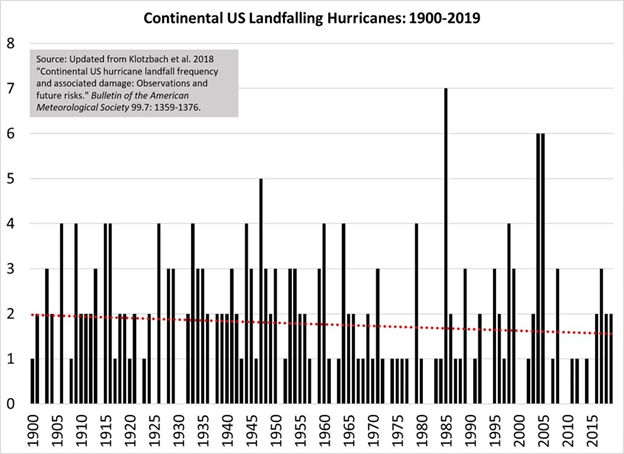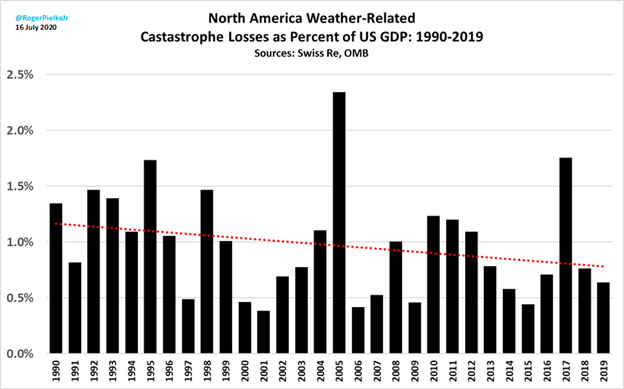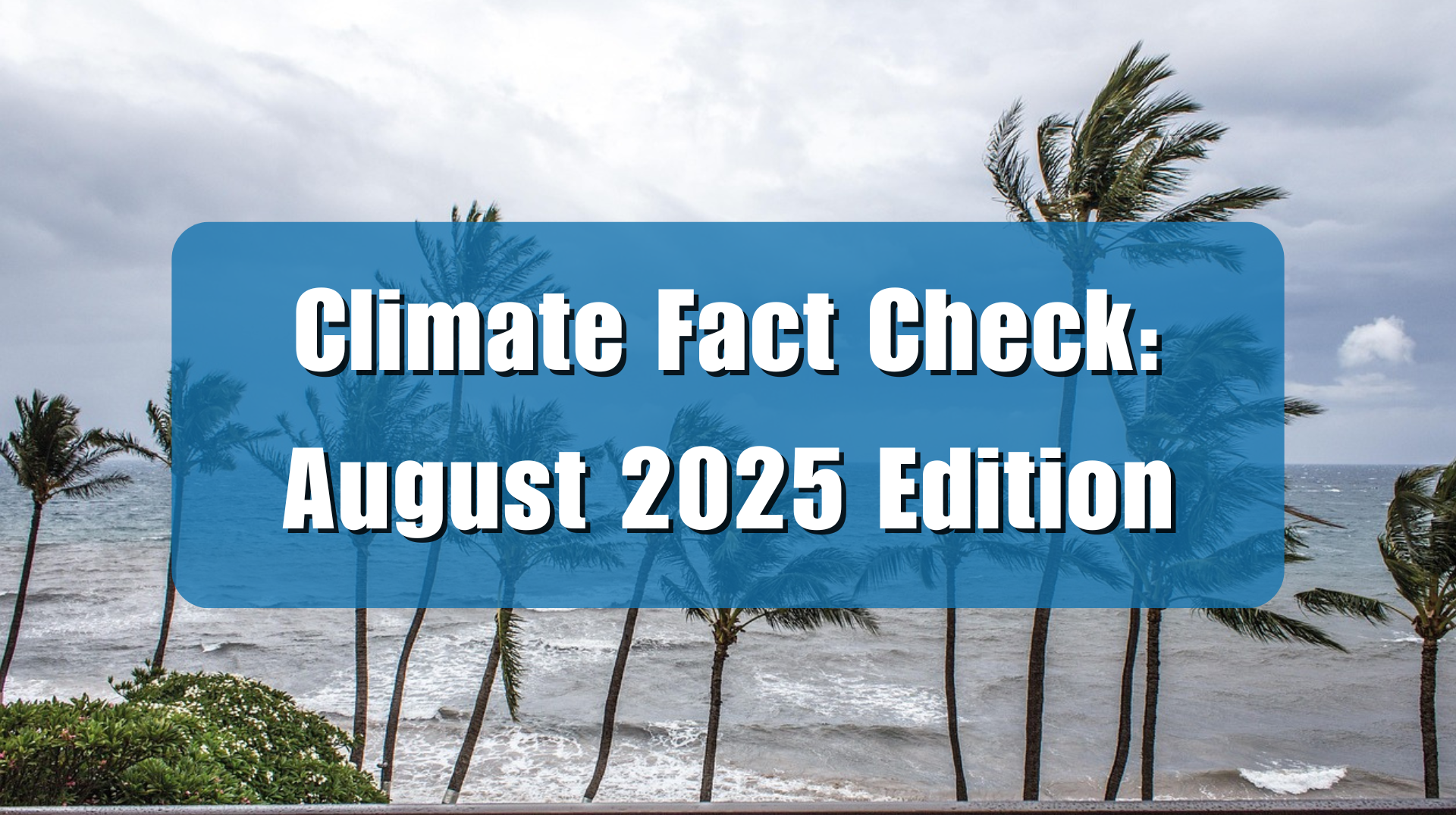The Scientific American, among other mainstreams media outlets, such as The New York Times and The Washington Post, are promoting claims made by the National Oceanic and Atmospheric Administration (NOAA), that climate change is causing increased instances of extreme weather, causing billions of dollars of damage. An examination of the press release NOAA put out shows that the agency’s claims are unsubstantiated. Extreme weather does cost Americans billions of dollars each year, but there is no evidence climate change is making weather worse, so it can’t be the cause of higher costs.
In fact, hard data refute NOAA’s claims, suggesting the press release is nothing more than a slick campaign to hype up climate fear Exposing this campaign, climate Scientist Roger Pielke, Jr. Ph.D., Tweeted three years ago:
Former NOAA official admits tabulation of “billion dollar” disasters was/is a shadow campaign to get people to “connect the dots” on climate change and severe weather Why not instead rely on actual data, IPCC, USNCA & peer-reviewed research?
Pielke showed that in a USA Today opinion piece, the deputy administrator for NOAA, Monica Medina, admitted the shadow campaign to fool the media, as the screencap below, shows:
In a 2020 Forbes article, “Everything You Hear About Billion-Dollar Disasters Is Wrong,” Pielke cites data and graphs that refute NOAA’s claims, blowing its effort to “connect the dots” apart, saying:
Are there more or more severe US hurricanes since 1900? No.
Is extreme weather costing us more as a proportion of GDP? No.
Pielke goes on to say that the entire episode “is an embarrassment.”
I worked in a @NOAA cooperative institute for 16 years & it is an important agency, staffed by smart, thoughtful scientists But the “billion dollar” disasters “connect the dots” propaganda is an embarrassment.
Despite the evidence that extreme weather events haven’t become more common or severe during the recent period of modest warming, the “connect the dots” propaganda continues today courtesy of disaster loaded NOAA press releases like the one that resulted this flurry of stories in the mainstream media in recent days, uncritically parroting NOAA’s claims.
Looking at the Scientific American headline, just how does “a record number of billion-dollar disasters show US isn’t ready for climate change”? According to hurricane data, the number of hurricanes making landfall in the United States has declined in recent decades. Hurricanes do billions of dollars more in damage compared to 30 years ago because more people live on hurricane prone coast, building and developing more expensive properties there.
The same holds true for destructive tornadoes and many other types of extreme weather.
As demonstrated by the second graph above, when these weather-related catastrophes flagged by NOAA are correlated with inflation and the U.S. Gross Domestic Product, costs are declining, suggesting NOAA is pushing misinformation and the media is complicit in promoting it.
A recent Climate Realism article, titled Wrong, Mainstream Media, ‘Extreme Weather’ is Fairly Common, Not Rare, shows that despite media claims, so-called “rare” weather events are actually fairly common, and there’s no signal in suggesting that climate change aka “global warming” is making extreme weather events more common.
The Intergovernmental Panel on Climate Change (IPCC) agrees with this assessment. In its Sixth Assessment Report, chapter 12, the IPCC says it finds low scientific confidence in the existence of any visible “global warming” effects in the form of weather extremes, for:
- Air Pollution Weather (temperature inversions)
- Aridity
- Avalanche (snow)
- Average rain
- Average Wind Speed
- Coastal Flood
- Drought Affecting Crops (agricultural drought)
- Drought From Lack Of Rain (hydrological drought)
- Erosion of Coastlines
- Fire Weather (hot and windy)
- Flooding From Heavy Rain (pluvial floods)
- Frost
- Hail
- Heavy Rain
- Heavy Snowfall and Ice Storms
- Landslides
- Marine Heatwaves
- Ocean Alkalinity
- Radiation at the Earth’s Surface
- River/Lake Floods
- Sand and Dust Storms
- Sea Level
- Severe Wind Storms
- Snow, Glacier, and Ice Sheets
- Tropical Cyclones
So, what we have is a disagreement between NOAA and the media claim on the one hand, who claim things like “We’re already seeing the effects of global warming in storms/cyclones/floods/coastal erosion/fire weather/sea level/etc.”, and hard data and the IPCC’s assessment, which show just the opposite to be true.
This is yet another shameful instance of the Biden administration’s disinformation campaign on climate change to gin up support for its climate spending and costly net zero policies. Sadly, the mainstream media is failing in their job as government watchdogs, instead they are complicit in spreading climate falsehoods.
























